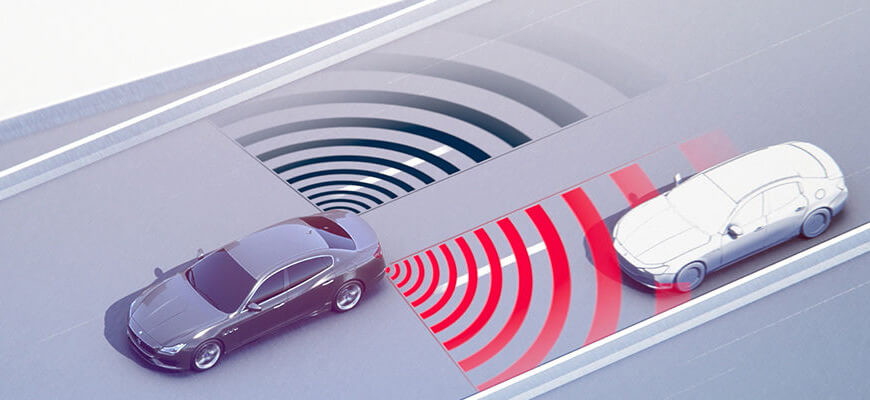
An aftermarket blind spot monitor is an ideal addition if you own an RV car that's not equipped with a blind spot detection system.
Blind spot monitor (BSM) system, or Blind Spot Detection (BSD) System is an advanced driver assistance system (ADAS) that notifies the driver if another vehicle has appeared within their blind zone and is at danger of a collision.
Content Table:
- 1. What Is an Aftermarket Blind Spot Monitor?
- 2. How Does a Blind Spot Monitor Work?
- 3. Is Blind Spot Detection Worth It?
- 4. Is It Possible to Add Blind Spot Monitoring Aftermarket?
- 5. How Much Does It Cost to Add a Blind Spot Monitor?
- 6. How to Choose an Aftermarket Blind Spot Monitor?
- 7. How to Install a Blind Spot Detection System?
1) What Is an Aftermarket Blind Spot Monitor?
Aftermarket Blind-spot Monitor is just what its name implies: It keeps an eye on the space just off the rear quarter areas of your vehicle.
These car blind spot can hide a vehicle approaching in the adjacent lanes, sometimes the driver mistakenly set their car’s outboard mirrors, consequently, merging into that lane often results in a crash.
Aftermarket Blind Spot Monitor system uses a set of blind spot sensors mounted on the side mirrors or rear bumper to detect vehicles in the adjacent lanes. If the sensors detect something dangerous, they'll alert you via an audible and/or visual warning. Some vehicles even use backup cameras as the main part of the BSD system or to complement the blind spot sensors.
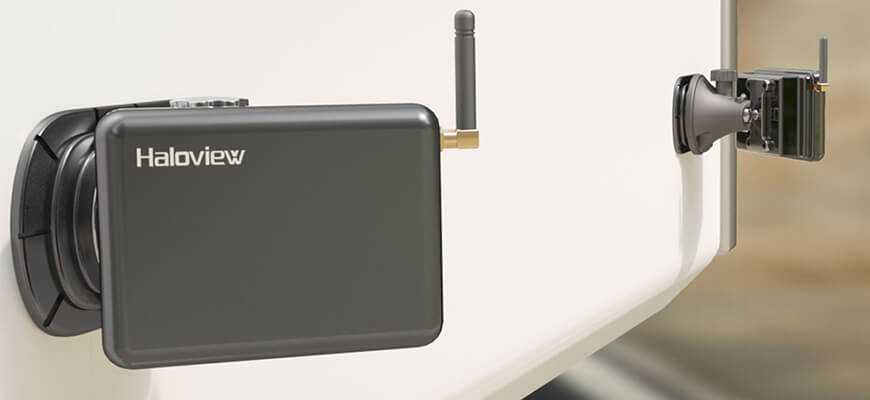
Blind Spot Sensor
Blind Spot Sensors are the eyes of any aftermarket blind spot monitoring system. A car blind spot sensor can "sense" the environment in front since there are different technologies like Radar, Sonar, and Lidar built-in. Basically, a blind spot monitor system will use two or more blind spot sensors to cover both sides of the car. When something enters into the "view" of the blind spot sensor at or above a specific speed, it will trigger the indicator.
Indicator
For aftermarket blind spot monitor system, the notification is an important thing, otherwise, you will never know when the blind spot sensor is tripped. Indicator lights come in many forms, but most aftermarket blind spot kits use a combination of visual LED lights and audible alarms to notify you. Many car blind spot detection systems also allow you to control notifications, such as the volume level of the alarm.
Types of Blind Spot Monitor
Aftermarket BSD Systems
Aftermarket blind spot monitoring kits constitute a small market, but as more and more start-up companies and major auto parts companies begin to provide custom-designed kits for various cars, the market continues to grow. Many of these kits are almost universal in application, which means you don’t have to worry about the make, model, and age of the vehicle.
Factory-Installed BSD Systems
The most common type of blind spot monitoring system is the system provided by the automotive manufacturer as a standard or an upgraded function of certain decorative levels. Although more and more manufacturers are starting to provide these systems for free, most manufacturers continue to keep them for more expensive vehicles. Therefore, they are often custom-tailored for specific models and rarely (if any) are compatible with older cars. If your factory-Installed BSD systems is broken, then the cost of repair is expensive, even more expensive than buying a new aftermarket blind spot monitor system.
2) How Does a Blind Spot Monitor Work?
There are two main components to aftermarket blind spot monitoring systems.
First, the sensor acts as a visual aid to perceive the environment. Second, the indicator will inform the driver that there is a potential danger. By using radar, and/or ultrasonic sensors, drivers will receive a visual and/or audible alert that there is potential danger in a car blind spot. Some blind spot monitoring systems will go as far as showing the driver what is in the blind spot.
An aftermarket blind spot detection systems usually have functions like Blind Spot Detection (BSD), Lane Change Assist (LCA), Active Overtaking Alarm (AOA)
Blind Spot Detection (BSD)
The system functions as an aid for notifying the driver if a car has entered or is present in the blind spot area.

Lane Change Assist (LCA)
This type of detection will notify the driver if a vehicle, fast-approaching vehicles from behind, is in the BSD detection area. If a vehicle has entered the car blind spot detection area the LED indicator will illuminate and the buzzer will sound to warn the driver that a vehicle is present.

Active Overtaking Alarm (AOA)
This type of detection will notify the driver if cars are in the blind spot detection area while passing another vehicle. When the target vehicle enters the BSD detection area, the LED indicator will illuminate and the buzzer will sound to warn the driver that a vehicle is present.
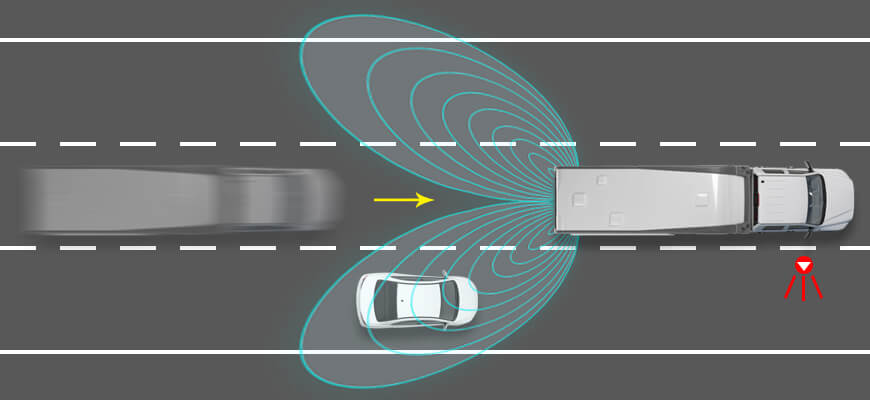
3) Is Blind Spot Detection Worth It?
So, now that you have understood how these aftermarket blind spot detection systems work, you are probably wondering: Are they worth the additional cost? After all, they are optional on most cars, meaning you will have to decide whether you should incur the additional charge of adding them to your next car.
Well, it depends. Before deciding whether to install blind spot monitoring, there are many things to consider. An important factor to consider is the size of your car. For example, if you often transport children, you will need to install a monitor on a minivan. This is because you will have difficulty keeping tabs on every part of your car’s exterior when driving on the highway. You will also need to look at the efficiency of your vehicle’s visibility. For example, you may not need monitors if you have a car with huge windows and perfect visibility.
Although some drivers will not order a car without a blind spot monitor, others believe that since safety features are often overlooked, it is not worth the extra money. However, even if a monitor is installed, remember to practice responsible driving habits.
If you are a novice driver or a driver who pays attention to life safety, we would recommend installing an aftermarket blind spot monitoring system on your car.
Benefits of Blind-Spot Monitoring
We believe that if you have not experienced blind spot monitoring, you will gradually realize its existence. Here are some benefits you might not consider:
- It will prevent some accidents and can minimize other accidents.
- You will experience an increased driving awareness.
- You will feel safer and more confident, and so will your passengers.
- Early warning increases the time you must respond.
- It can relieve some of your stress when driving at close range.
- The larger the vehicle, the greater the profit.
4) Is It Possible to Add Blind Spot Monitoring Aftermarket?
Yes, if your car does not have a blind spot sensor, you can install this technology. Although the accuracy of aftermarket blind spot detection installments is often slightly less than that of factory-installed technology, it is still worth considering. Adding newer technology to an older vehicle can increase driving awareness, increase response time, and make drivers and passengers feel safer.
Many aftermarket blind spot monitoring systems are universal, which means you can use them regardless of the age, make, and model of your vehicle. The system allows you to observe the road conditions more, thereby reducing your stress level. There are dozens of kits to choose from, so be sure to do some research.

5) How Much Does It Cost to Add a Blind Spot Monitor?
Aftermarket blind spot monitoring systems vary in price. The most affordable system sells for $250 and under. Systems in this price range include inexpensive blind spot sensors and very basic level of indicator technology. Although cost-effective, these blind spot systems tend to be limited in functionality and accuracy, you even can not install it yourself on your car but have to ask for a professional.
The mid-range cost of the aftermarket blind spot monitoring system is between 250-500 US dollars. The system in this price range has higher accuracy, but it is still not as accurate as the factory installed blind spot monitoring systems for new vehicles.
Finally, the higher end aftermarket blind spot monitor systems cost $500 or more. These systems have the highest reliability and accuracy. The internal control uses advanced controller programming to reduce the possibility of false alarms. Thus, the blind spot sensor has higher accuracy.
6) How to Choose an Aftermarket Blind Spot Monitor?
Aftermarket Blind Spot Monitor systems are designed to be tiny and weatherproof, so those things are pretty much guaranteed. However, there are some other variables to consider:
Accuracy of Blind Spot Sensor.
One thing that varies somewhat with different aftermarket blind spot monitor systems is the accuracy of the blind spot sensors. Essentially, accuracy for blind spot detection system is how well the sensors can ignore false alarms (things that don't present a danger) without ignoring anything that needs to be noticed. High-quality blind spot sensors tend to offer better accuracy, but keeping false alarm rates down also requires an advanced algorithms to differentiate positive and false alarms as much as possible.
Installation easy or not.
To use an aftermarket blind spot monitoring system, assuming your car doesn't come with one, will require installation. If you want good results, professional installation is often the easiest way, but many kits can make it easier for you to install each component yourself. In these cases, independent components such as sensors and indicators need to be installed, usually using drill bits and some fasteners.
7) How to Install a Blind Spot Detection System?
After you purchase the aftermarket blind spot monitor system, you can install the pieces yourself.
The installation of traditional wired blind spot monitoring systems is extremely complicated, requiring professionals to remove the bumper of the car for installation, while you just can install the wireless blind spot monitoring systems on the surface of your car.
Here is the Installation Example for a Haloview SENS 3 BSD System
We provide two installation method for SENS 3, if you want to install it permanently on your vehicle, please just follow these steps:
Install the blind spot sensors at corresponding place of the car.

Find below tools in package box
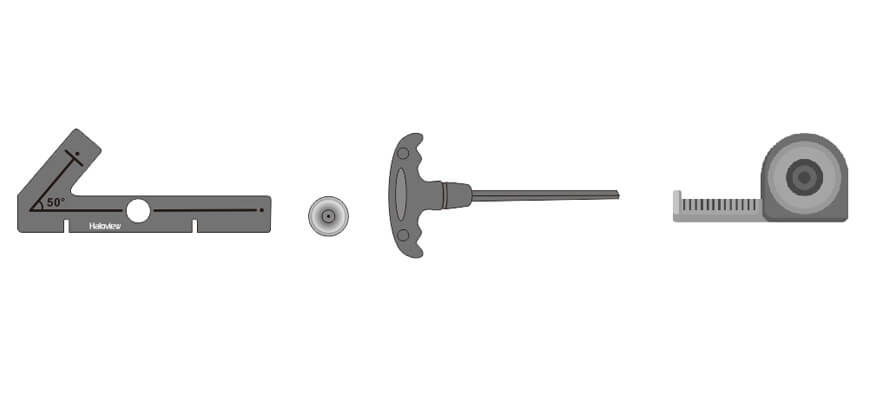
STEP 1: Attach the radar sensor to the rear of the vehicle about 50cm to 80cm above the ground as shown in the figure:

STEP 2: Locate the punching position by the support cushion (inverted T shape as shown in the figure).
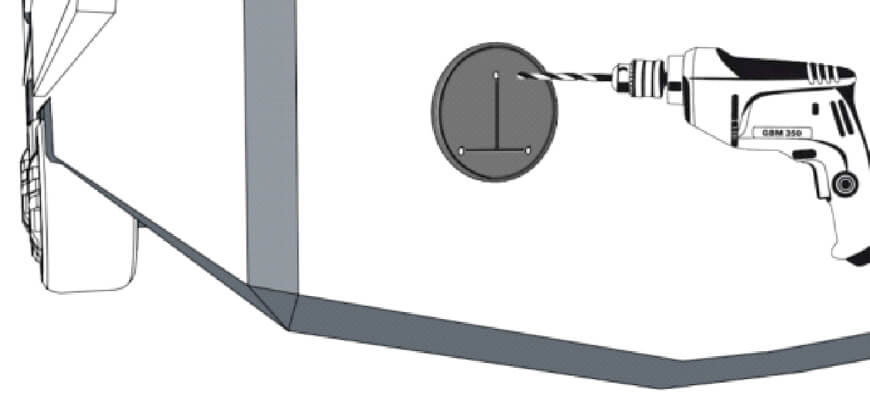
STEP 3: Clamp the protractor on the blind spot sensor and turn the sensor to make the end of the protractor's corner is parallel to the vehicle wheel.


STEP 4: Put the horizontal bead on the position of the protractor hole and turn the radar to make the bubble of the horizontal bead is in the middle position.
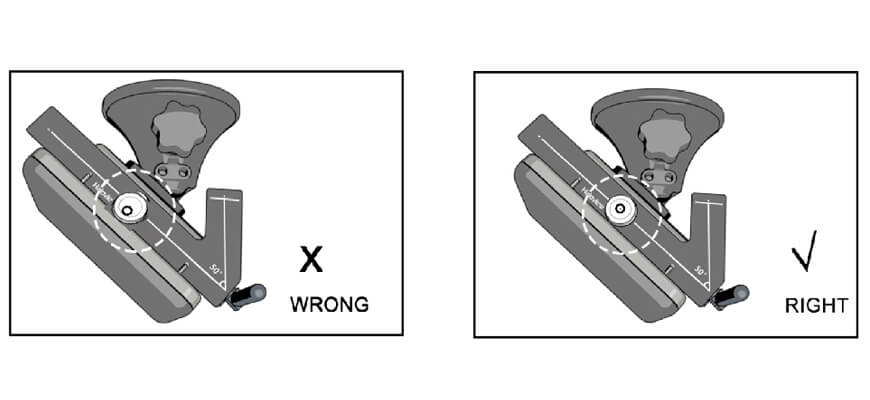
STEP 5: Then tighten the screws with the hex key to fix the rotating bracket. Please tighten it symmetrically to avoid changing the blind spot sensor position on the car.

After the installation of the sensors on the left and right sides, it should be as shown in the figure below:
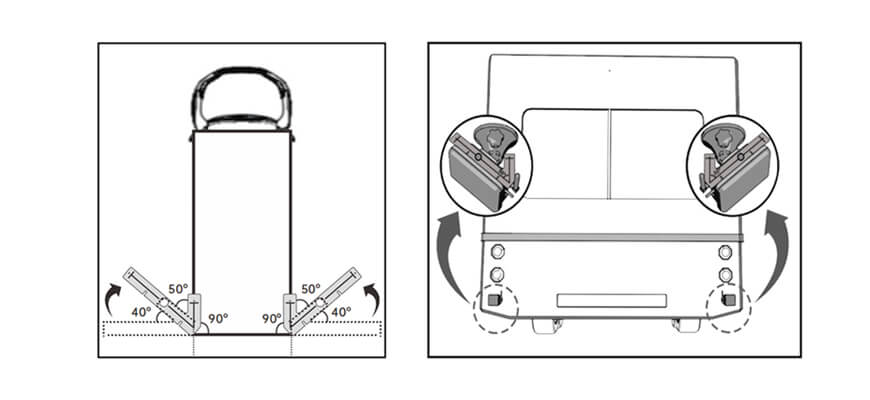
STEP 6: Getting power supply for the blind spot sensor, pry the lights and connect the power line, pay attention to the positive and negative.
Install Aftermarket Blind Spot Detection System without Drilling: If your vehicle is metal body, we recommend using the Smart Battery Pack or Metal Plate, free wiring, plug and play, for other materials of vehicle, please use provided metal plate with 3M tape. Before putting the metal plate on vehicle, please make sure you wipe off the dust on vehicle surface.
STEP 7: Mount the LED indicator lights inside your vehicle's cabin. These should be placed where you can easily see them without taking your eyes off the road.
STEP 8: Volume adjustment. Test the system to make sure it has the right volume. Whenever it activates, you don't want to be frightened.
If you have any questions or problems when installing an aftermarket blind spot monitor system on your car, please contact the Haloview Service Center for professional installation.
